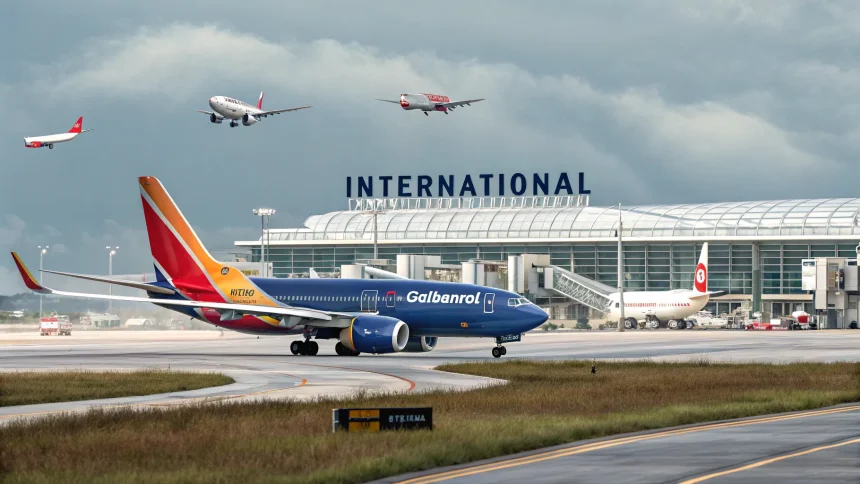Southwest Airlines is considering international expansion, marking a significant shift in strategy for the carrier that has primarily focused on domestic routes throughout its more than 50-year history. This potential move signals that the Texas-based airline may be aligning its business model more closely with its competitors.
The airline, known for its point-to-point service model and no-frills approach, has built its reputation on serving domestic markets efficiently. However, the company now appears ready to venture beyond U.S. borders as it seeks new growth opportunities.
A Departure From Tradition
Southwest’s potential international expansion represents a notable departure from its traditional business strategy. Since its founding in 1967, the airline has concentrated on building a strong domestic network, avoiding the complexities and additional costs associated with international operations.
This strategic shift comes as the airline industry continues to evolve in response to changing market conditions and consumer preferences. By considering overseas markets, Southwest appears to be acknowledging that future growth may require looking beyond its established domestic network.
Following Competitor Strategies
The move suggests Southwest is increasingly willing to adopt strategies similar to those of major competitors like American, United, and Delta, all of which have extensive international networks. For decades, Southwest differentiated itself through its unique operating model, which included:
- Focus on secondary airports
- Single aircraft type fleet (Boeing 737 variants)
- No assigned seating
- No baggage fees for first two checked bags
Industry analysts note that Southwest has gradually moved away from some of these distinctive practices in recent years. The potential overseas expansion represents another step in this evolution, potentially bringing the airline’s business model closer to that of traditional network carriers.
Challenges and Opportunities
International expansion presents both opportunities and challenges for Southwest. On one hand, overseas markets could provide new revenue streams and growth potential as the domestic market becomes increasingly saturated. On the other hand, international operations typically involve higher costs, regulatory complexities, and operational challenges.
Southwest would need to navigate issues such as:
“International operations require different aircraft configurations, additional crew training, and compliance with various countries’ regulations,” notes an industry expert familiar with airline expansion strategies.
The airline would also need to determine which overseas markets align with its operational strengths and brand identity. Given Southwest’s history of careful, methodical growth, any international expansion would likely be implemented gradually rather than through aggressive acquisition of routes.
Impact on Southwest’s Identity
For many travelers and industry observers, Southwest’s identity has been closely tied to its role as a domestic carrier with a distinct approach to air travel. The potential shift to international service raises questions about how this might affect the airline’s brand and customer perception.
Southwest has already made some moves toward international service, primarily to nearby destinations in Mexico, the Caribbean, and Central America. However, a more substantial overseas expansion would represent a more significant evolution for the carrier.
As Southwest considers this strategic shift, the airline industry will be watching closely to see how the company balances its traditional strengths with the demands of competing in international markets. The outcome could reshape not only Southwest’s future but also the competitive landscape of the airline industry as a whole.







